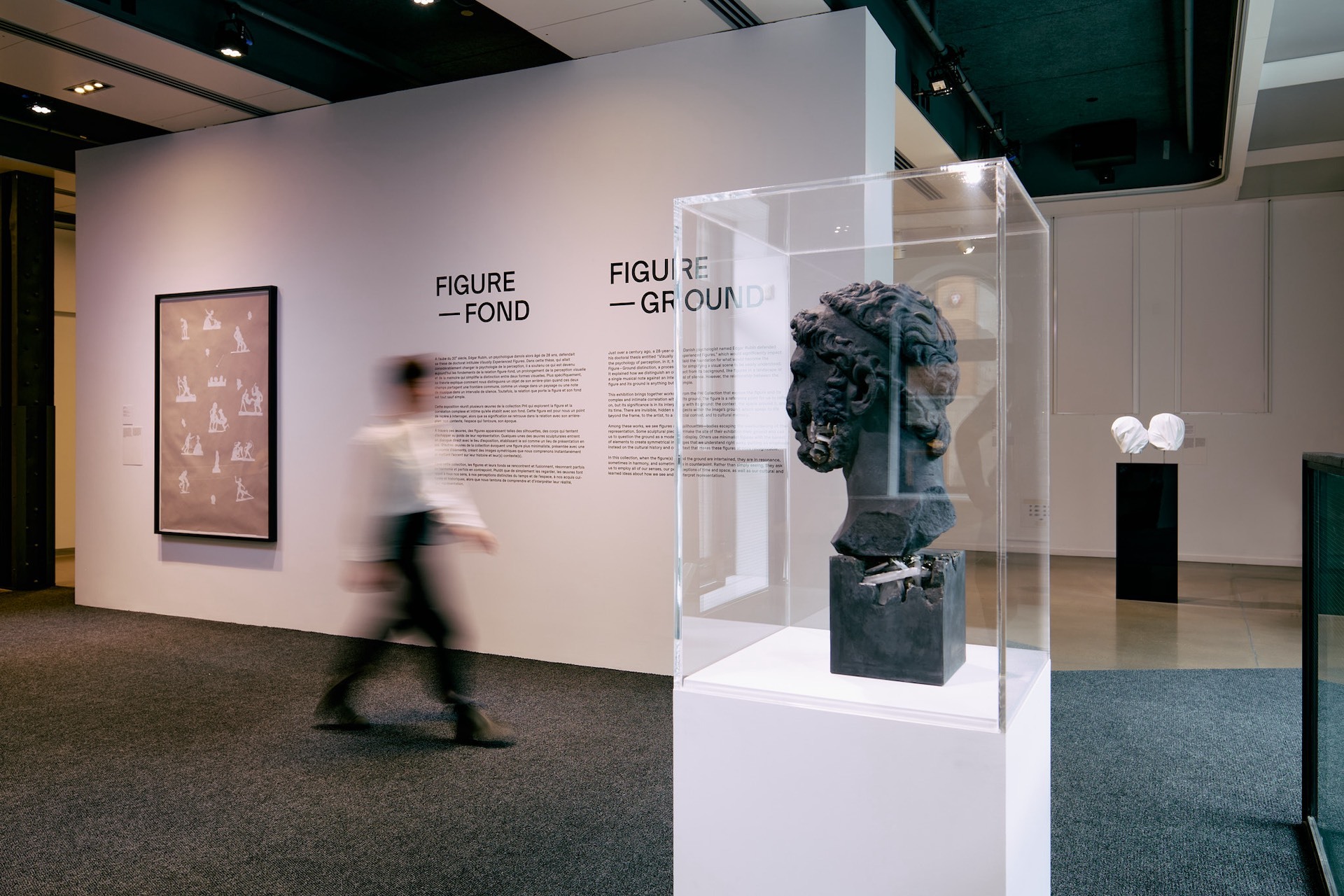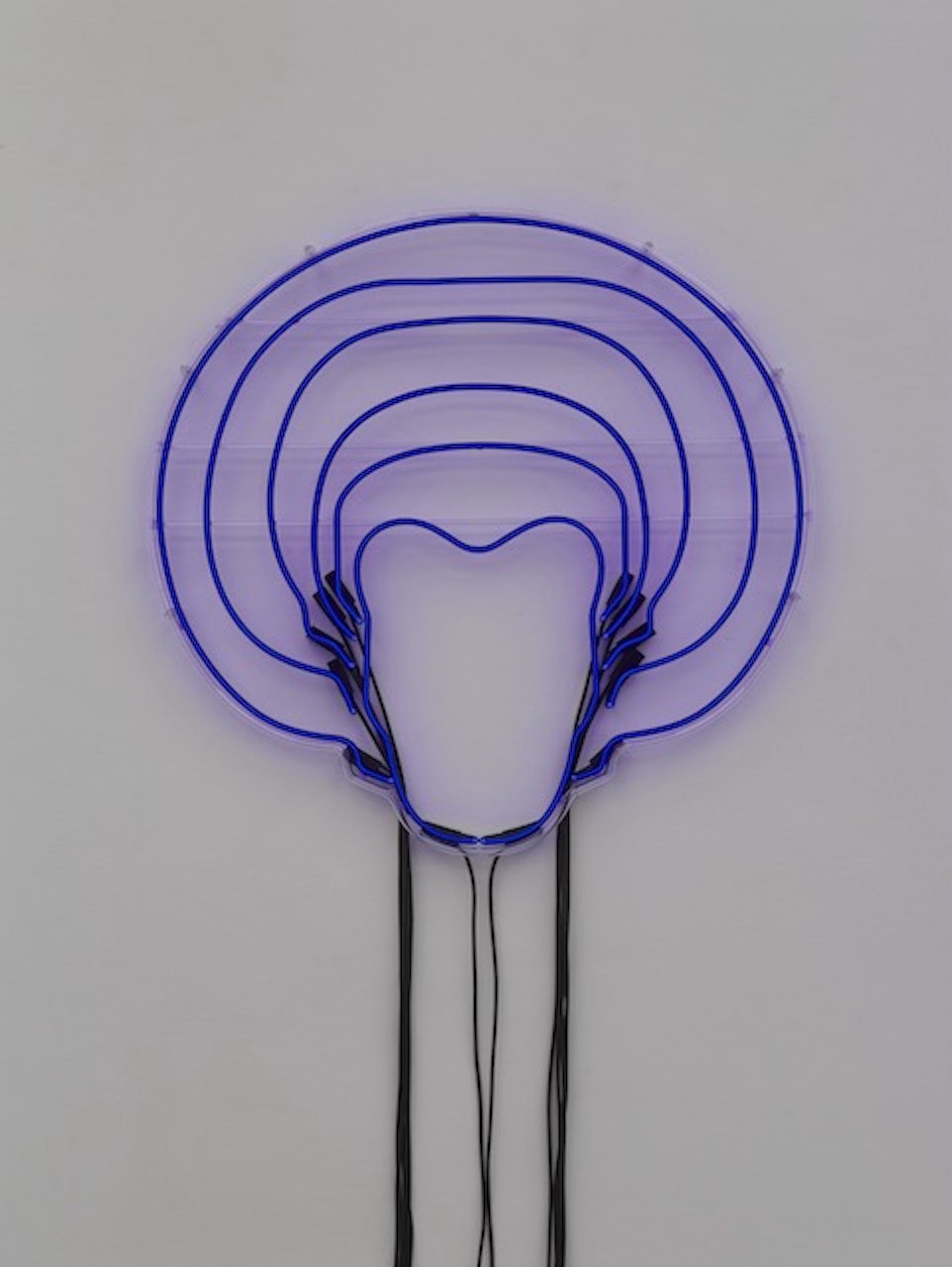
Free
Centre
PHI's art collection
December 15 → June 11, 2023
An ongoing collection of contemporary artworks, accessible and free at the PHI Centre

Afro - 2018
Neon
89.5 × 91.5 × 5 cm
Collection of Miles Greenberg
Theaster Gates' Afro 2018: Incarnations/Intention
Theaster Gates' Afro appears as sculptural mark-making [1] underlining the tacit intentionality of what it "represents,": the 1960s/70s Afro hairstyle donned by members of the Afro-diaspora. Afro represents a social-ornament. Mark-making in the literal sense of Gates having essentially drawn (marked) an outline "representing" intention tacitly and at once directly - signifying the social, political, and aesthetic of Afro-American life at that time. An intentionality that would (at that moment) render it "more than" a popularized cultural tendency shining a light on "something" political, metaphysical, animistic, sonic, and at once auratic. Gates' purple neon sculptural marking/drawing incarnates an Afro's technologies- its literal and metaphoric frequencies and techniques akin to African traditions of the "aesthetic of the cool," "ashe," "improvisatory drive and brilliance," "vital aliveness," (Farris Thompson). The sculpture’s radiating light sphere further delineates such "techniques." Gate's depiction suggests a centrifugal and centripetal social and actual morphology of the Afro. Afro presents the bicameral resonating of its wearers – which is neon's literal call and response. Afro marks more than accoutrement, incisively tracing shared notions of the cosmological and cosmopolitical. If, as Gates has said of drawing (mark-making) as being "definitive strokes," Afro’s neon drawing as a sculptural marking brings to mind the "definitive stroke" of what it "represents." Afro is a representation via a "definitive stroke" underlined through an incarnation of that social body. In Afro: a luminous marker of a "being with," conduits of a "communitas" (shared community energy and language that can be coded and decoded by faithful adherents), social intrusion and disruption (see the rhizomatic spilling wires), modes of social cohesion and belonging and at once being a definitive stroke pointing to individuation, interior exploration, the enlivening of black life, and heady rumination (the Afro's waves/antennae) that must come before and with the common. Gates has “dropped” nothing less than the lines of sidereal intentionality and a gesture of social sculpture. [2]
Theaster Gates (b. 1973, Chicago, USA) lives and works in Chicago. Gates creates work that focuses on space theory and land development, sculpture and performance. Drawing on his interest and training in urban planning and preservation, Gates redeems spaces that have been left behind. Known for his recirculation of art-world capital, Gates creates work that focuses on the possibility of the “life within things.” Gates smartly upturns art values, land values, and human values. In all aspects of his work, he contends with the notion of Black space as a formal exercise – one defined by collective desire, artistic agency, and the tactics of a pragmatist.
Theaster Gate's Afro is currently on view in Figure–Ground, a series bringing together several works from PHI's art collection that explore the figure and the complex and intimate correlation it establishes with its background.

Free
Centre
An ongoing collection of contemporary artworks, accessible and free at the PHI Centre

Free
Centre
An ongoing collection of contemporary artworks, accessible and free at the PHI Centre
[1] Marking a particular and at once larger time -space, corporeality, as well as being the mark-making as popular community visual registers.
[2] Harkening the auratic “signaturing” of Joseph Beuys in his own respective time.